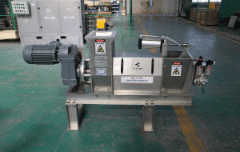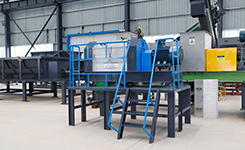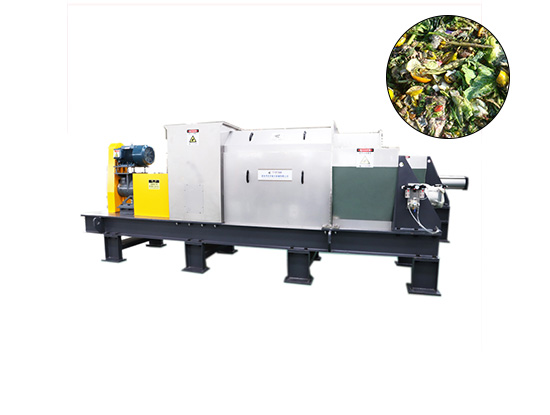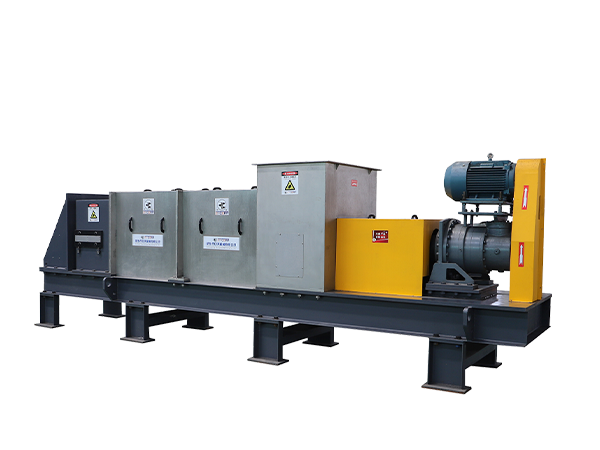Screw Extrusion Dewatering Machine: Working Principle
Screw Extrusion Dewatering Machine: Working Principle
The screw extrusion dewatering machine (also known as a screw press or spiral dryer) is a specialized equipment designed to remove moisture from fibrous materials. By leveraging patented spiral extrusion technology, it compresses and squeezes materials through a rotating screw shaft, effectively separating water content while maintaining the structural integrity of solids.
Core Components and Workflow
A typical screw extrusion dewatering machine consists of three key parts:
Key Advantages and Applications
Why Choose Screw Extrusion Dewatering?
-Food industry by-products (fruit peels, coffee grounds)
-Industrial sludges and pulp (paper, textile recycling).
.jpg)
Technical Insights for Optimal Performance
- Helix Diameter: Larger diameters suit bulk materials, while smaller ones improve pressure for fibrous substances.
The screw extrusion dewatering machine (also known as a screw press or spiral dryer) is a specialized equipment designed to remove moisture from fibrous materials. By leveraging patented spiral extrusion technology, it compresses and squeezes materials through a rotating screw shaft, effectively separating water content while maintaining the structural integrity of solids.
Core Components and Workflow
A typical screw extrusion dewatering machine consists of three key parts:
- Spiral Shaft: Rotates at high speed to push materials forward.
- Screen Mesh: Allows water and fine particles to escape during compression.
- Dewatering Chamber: Houses the screw shaft and screen mesh for controlled moisture removal.
- Feeding: Fibrous materials (e.g., slurry, pulp, or biomass) are fed into the chamber via an inlet.
- Compression: The rotating screw shaft gradually tightens the material, applying immense pressure.
- Water Separation: As pressure increases, excess water and liquids pass through the perforated screen mesh.
- Dry Output: The dehydrated solid material exits through the discharge port, typically with moisture content reduced by 30%-70%.
Key Advantages and Applications
Why Choose Screw Extrusion Dewatering?
- High Efficiency: Processes 10-50 tons per hour, ideal for large-scale operations.
- Energy Savings: Uses 60%-80% less energy compared to conventional drying methods.
- Versatility: Handles diverse materials including:
-Food industry by-products (fruit peels, coffee grounds)
-Industrial sludges and pulp (paper, textile recycling).
- Long Lifespan: Built with corrosion-resistant alloys and耐磨designs, reducing downtime.
Industries Benefiting from Spiral Dewatering
| Sector | Applications |
| Agriculture | Drying biomass for biofuel production |
| Food Processing | Removing moisture from fruit/vegetable pulp |
| Paper Industry | Sludge dewatering in pulp mills |
| Waste Management | Recycling organic waste into compost |
.jpg)
Technical Insights for Optimal Performance
- Screw Design Matters:
- Helix Diameter: Larger diameters suit bulk materials, while smaller ones improve pressure for fibrous substances.
- Screen Mesh Selection:
- Control System:
RECENT POSTS
Application
-
.jpg) Onion dewateringHandling material: Onion; Capacity: 3t/dREAD MORE >
Onion dewateringHandling material: Onion; Capacity: 3t/dREAD MORE > -
.jpg) Pectin Material SeparationDesigned for sticky, agglomerative pectin-based materials (e.g., citrus peel, apple pomace), our technology overcomes clogging and inefficiency. Achieves 40% higher efficiency and 25% lower energy consumption vs. traditional methods.READ MORE >
Pectin Material SeparationDesigned for sticky, agglomerative pectin-based materials (e.g., citrus peel, apple pomace), our technology overcomes clogging and inefficiency. Achieves 40% higher efficiency and 25% lower energy consumption vs. traditional methods.READ MORE >
More Application






.jpg)

